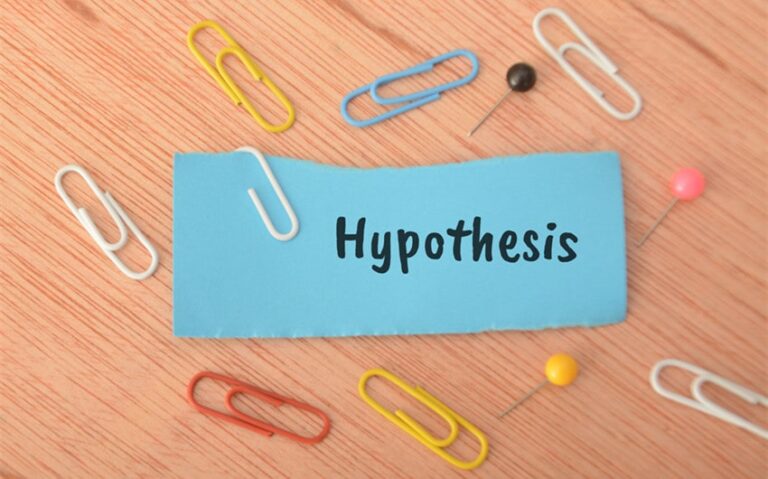What is a Rhyme Scheme in Poetry: 8 Key Examples
Poetry has a unique way of touching our hearts and minds, often through its rhythm and flow. One essential element that contributes to this is the rhyme scheme. But what is a rhyme scheme in poetry? Simply put, it’s the pattern of rhymes at the end of each line in a poem.
Understanding rhyme schemes can deepen your appreciation of poetry and enhance your own writing skills. In this article, we’ll explore different types of rhyme schemes and their significance in creating beautiful, memorable poems.
What is a Rhyme Scheme in Poetry?
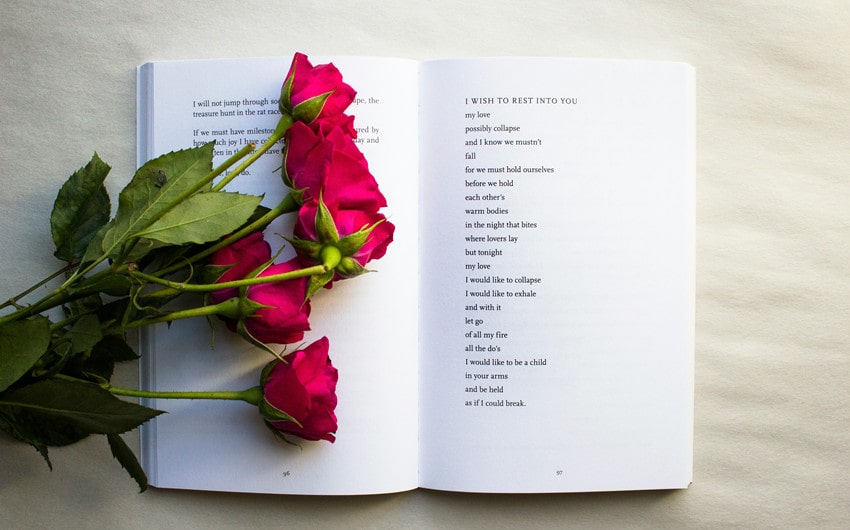
A rhyme scheme is a pattern of sounds that repeats at the end of lines in poetry, creating a structure and musicality in the poem. Rhyme itself is the repetition of similar sounds, typically at the end of lines. In a rhyme scheme, these patterns are denoted using letters of the alphabet to indicate which lines rhyme. For example, an “ABAB” rhyme scheme means that the first and third lines rhyme with each other, and the second and fourth lines rhyme with each other.
Understanding rhyme schemes helps readers and writers recognize the rhythmic and sound patterns in poetry. This not only enhances the reading experience but also aids poets in crafting verses that flow smoothly and resonate with their audience. By identifying and using different rhyme schemes, poets can add depth and texture to their work, making it more engaging and memorable.
Types of Rhyme Schemes
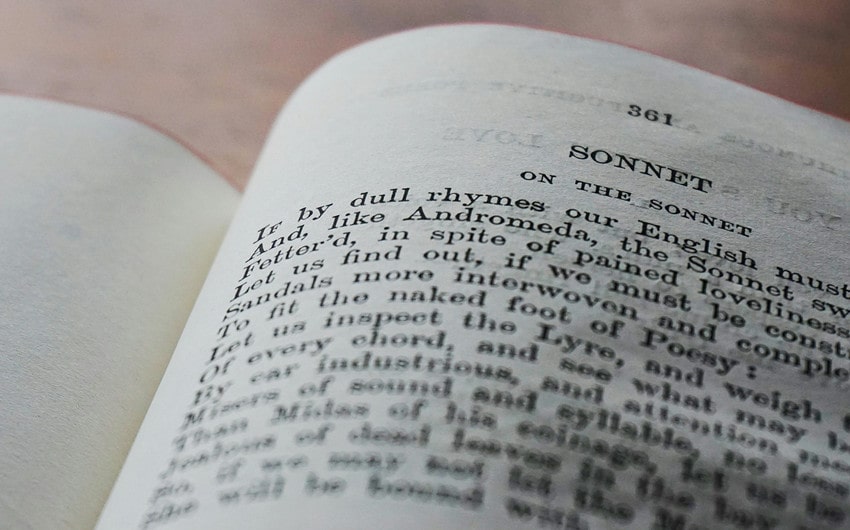
Rhyme schemes in poetry vary widely, each bringing a unique rhythm and structure to a poem. Here are some of the most common types of rhyme schemes:
1. Couplet (AA)
A couplet is the simplest form of rhyme scheme, consisting of two consecutive lines that rhyme with each other. This pattern is often used for its straightforward structure and immediate impact. Couplets are common in many types of poetry, including sonnets, where they often serve to summarize or conclude the poem. The brevity of a couplet allows for sharp, concise expression, making it a versatile tool for poets.
Example:
The cat sat on the mat (A)
And chased away the rat (A)
2. Alternate Rhyme (ABAB)
The alternate rhyme scheme, also known as cross rhyme, features a pattern where the first and third lines rhyme with each other, and the second and fourth lines rhyme with each other. This scheme creates a balanced and pleasing rhythm, often used in ballads and quatrains. The alternating rhymes help to sustain the reader’s interest over longer passages, providing a rhythmic framework that can support a wide range of themes and emotions.
Example:
The sun sets in the west (A)
The sky is painted red (B)
Birds return to their nest (A)
And stars shine overhead (B)
3. Enclosed Rhyme (ABBA)
Enclosed rhyme, also referred to as envelope rhyme, has the first and fourth lines rhyming with each other and the second and third lines rhyming with each other. This scheme creates a symmetrical pattern that gives the poem a sense of unity and closure. The enclosing lines often encapsulate the central idea or theme of the stanza, making this pattern effective for emphasizing key concepts and adding a layer of complexity to the poem’s structure.
Example:
In the quiet of the night (A)
The moon casts a silver glow (B)
Stars twinkle in the sky’s show (B)
Everything feels just right (A)
4. Chain Rhyme (AABA, BBCB, etc.)
Chain rhyme schemes interlock the rhyme patterns of successive stanzas, where the second line of each stanza sets the rhyme for the first and third lines of the next stanza. This technique creates a continuous, flowing connection between stanzas, giving the poem a seamless and dynamic quality. Chain rhymes are particularly useful in longer poems, where maintaining a cohesive narrative flow is essential.
Example:
A bird flew high and sang (A)
Its song was clear and bright (A)
The melody rang (B)
Throughout the quiet night (A)
5. Limerick (AABBA)
The limerick is a five-line poem with a distinctive rhythm and rhyme scheme, where the first, second, and fifth lines rhyme, and the third and fourth lines form a separate rhyming pair. Known for its playful and often humorous tone, the limerick’s structured pattern makes it easy to remember and recite. The fixed form of the limerick encourages creativity within its constraints, making it a popular choice for light-hearted and witty poetry.
Example:
There once was a man from the coast (A)
Who thought he could eat a roast (A)
He chewed and he bit (B)
But he couldn’t finish it (B)
So he left it for a ghost (A)
6. Sonnet
Sonnets are 14-line poems that traditionally follow specific rhyme schemes, with the two most famous being the Shakespearean and Petrarchan sonnets.
Shakespearean Sonnet (ABABCDCDEFEFGG)
The Shakespearean sonnet, also known as the English sonnet, follows the rhyme scheme ABABCDCDEFEFGG. This pattern divides the poem into three quatrains (four-line stanzas) and a final rhyming couplet (two-line stanza).
The alternating rhyme of the quatrains allows the poet to develop a theme or argument in a structured yet flexible manner. The concluding couplet often provides a resolution or commentary, adding a powerful ending to the sonnet. A famous example of a Shakespearean sonnet is William Shakespeare’s “Sonnet 18,” also known as “Shall I compare thee to a summer’s day?” This sonnet exemplifies the structure and lyrical beauty typical of Shakespeare’s work.
Example:
Shall I compare thee to a summer’s day? (A)
Thou art more lovely and more temperate: (B)
Rough winds do shake the darling buds of May, (A)
And summer’s lease hath all too short a date: (B)
Sometime too hot the eye of heaven shines, (C)
And often is his gold complexion dimmed; (D)
And every fair from fair sometime declines, (C)
By chance or nature’s changing course untrimmed; (D)
But thy eternal summer shall not fade (E)
Nor lose possession of that fair thou ow’st; (F)
Nor shall Death brag thou wander’st in his shade, (E)
When in eternal lines to time thou grow’st: (F)
So long as men can breathe or eyes can see, (G)
So long lives this, and this gives life to thee. (G)
Petrarchan Sonnet (ABBAABBACDCDCD or CDECDE)
The Petrarchan sonnet, also known as the Italian sonnet, is divided into two parts: an octave and a sestet. The octave follows the rhyme scheme ABBAABBA, which sets up a problem, situation, or emotional state. The sestet then resolves or reflects on this setup, using either a CDCDCD or CDECDE rhyme scheme.
A classic example of a Petrarchan sonnet is “How Do I Love Thee?” (Sonnet 43) by Elizabeth Barrett Browning, which uses the ABBAABBACDCDCD rhyme scheme.
Example:
How do I love thee? Let me count the ways. (A)
I love thee to the depth and breadth and height (B)
My soul can reach, when feeling out of sight (B)
For the ends of Being and ideal Grace. (A)
I love thee to the level of everyday’s (A)
Most quiet need, by sun and candle-light. (B)
I love thee freely, as men strive for Right; (B)
I love thee purely, as they turn from Praise. (A)
I love thee with the passion put to use (C)
In my old griefs, and with my childhood’s faith. (D)
I love thee with a love I seemed to lose (C)
With my lost saints,—I love thee with the breath, (D)
Smiles, tears, of all my life!—and, if God choose, (C)
I shall but love thee better after death. (D)
7. Terza Rima (ABA BCB CDC, etc.)
Terza Rima is a three-line stanza form with an interlocking rhyme scheme, where the second line of each stanza sets the rhyme for the first and third lines of the next stanza. This pattern creates a seamless, flowing connection between stanzas, giving the poem a continuous and dynamic quality.
Terza Rima is particularly effective in longer narrative poems and is known for its use in Dante Alighieri’s “Divine Comedy.” Another classic example of Terza Rima is found in Percy Bysshe Shelley’s poem “Ode to the West Wind.”
Example:
O wild West Wind, thou breath of Autumn’s being, (A)
Thou, from whose unseen presence the leaves dead (B)
Are driven, like ghosts from an enchanter fleeing, (A)
Yellow, and black, and pale, and hectic red, (B)
Pestilence-stricken multitudes: O thou, (C)
Who chariotest to their dark wintry bed (B)
The wingèd seeds, where they lie cold and low, (C)
Each like a corpse within its grave, until (D)
Thine azure sister of the Spring shall blow (C)
Her clarion o’er the dreaming earth, and fill (D)
(Driving sweet buds like flocks to feed in air) (E)
With living hues and odours plain and hill: (D)
Wild Spirit, which art moving everywhere; (E)
Destroyer and preserver; hear, oh hear! (E)
8. Villanelle (ABA ABA ABA ABA ABA ABAA)
A Villanelle is a 19-line poem with a complex structure of repeated lines and a specific rhyme scheme. The first and third lines of the opening tercet are alternately repeated as the final lines of the subsequent stanzas and come together as the final couplet in the last stanza.
This repetition creates a haunting, lyrical quality, making the Villanelle ideal for exploring themes of obsession, memory, and cyclical patterns in life. The rigid structure challenges poets to be both creative and disciplined, resulting in a highly impactful and memorable form. A famous example of a Villanelle is Dylan Thomas’s “Do Not Go Gentle into That Good Night.”
Example:
Do not go gentle into that good night, (A)
Old age should burn and rave at close of day; (B)
Rage, rage against the dying of the light. (A)
Though wise men at their end know dark is right, (A)
Because their words had forked no lightning they (B)
Do not go gentle into that good night. (A)
Good men, the last wave by, crying how bright (A)
Their frail deeds might have danced in a green bay, (B)
Rage, rage against the dying of the light. (A)
Wild men who caught and sang the sun in flight, (A)
And learn, too late, they grieved it on its way, (B)
Do not go gentle into that good night. (A)
Famous Poems with Notable Rhyme Schemes
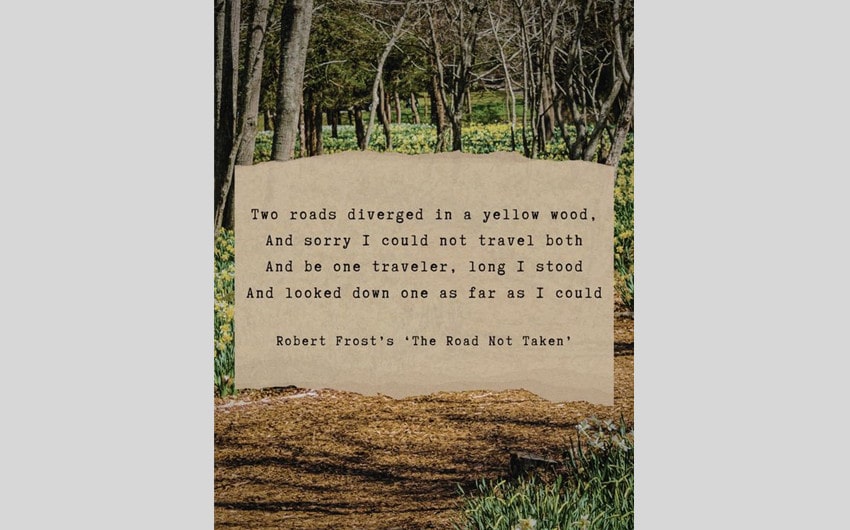
Image source: Pinterest
1. “The Road Not Taken” by Robert Frost
Robert Frost’s “The Road Not Taken” employs an ABAAB rhyme scheme in each of its four stanzas. This scheme creates a musical quality that enhances the reflective and contemplative tone of the poem. The use of rhymes ties together the poem’s exploration of choices and their consequences.
Lines from “The Road Not Taken”:
Two roads diverged in a yellow wood, (A)
And sorry I could not travel both (B)
And be one traveler, long I stood (A)
And looked down one as far as I could (A)
To where it bent in the undergrowth; (B)
2. “Ode to a Nightingale” by John Keats
John Keats’s “Ode to a Nightingale” features a complex ABABCDECDE rhyme scheme in each stanza. This pattern blends elements of both the Shakespearean and Petrarchan sonnet forms, contributing to the lyrical and meditative quality of the poem. The intricate rhyme scheme mirrors the poem’s exploration of fleeting beauty, mortality, and the desire for transcendence, creating a rich tapestry of sound and meaning.
Lines from “Ode to a Nightingale”:
My heart aches, and a drowsy numbness pains (A)
My sense, as though of hemlock I had drunk, (B)
Or emptied some dull opiate to the drains (A)
One minute past, and Lethe-wards had sunk: (B)
‘Tis not through envy of thy happy lot, (C)
But being too happy in thine happiness,— (D)
That thou, light-winged Dryad of the trees (C)
In some melodious plot (E)
Of beechen green, and shadows numberless, (D)
Singest of summer in full-throated ease. (E)
3. “Stopping by Woods on a Snowy Evening” by Robert Frost
Robert Frost’s “Stopping by Woods on a Snowy Evening” is renowned for its simple yet effective AABA rhyme scheme in each quatrain, with the final stanza repeating the rhyme of the third line. This pattern creates a gentle, lulling rhythm that reflects the serene, contemplative mood of the poem.
Lines from “Stopping by Woods on a Snowy Evening”:
Whose woods these are I think I know. (A)
His house is in the village, though; (A)
He will not see me stopping here (B)
To watch his woods fill up with snow. (A)
4. “The Raven” by Edgar Allan Poe
Edgar Allan Poe’s “The Raven” features an intricate rhyme scheme that includes internal rhymes and a pattern of ABCBBB in each stanza. The use of repeated “B” rhymes at the end of each stanza creates a haunting, hypnotic effect, enhancing the poem’s eerie and melancholic atmosphere.
Lines from “The Raven”:
Once upon a midnight dreary, while I pondered, weak and weary, (A)
Over many a quaint and curious volume of forgotten lore— (B)
While I nodded, nearly napping, suddenly there came a tapping, (C)
As of someone gently rapping, rapping at my chamber door. (B)
“’Tis some visitor,” I muttered, “tapping at my chamber door— (B)
Only this and nothing more.” (B)
5. “Ozymandias” by Percy Bysshe Shelley
Percy Bysshe Shelley’s “Ozymandias” is a sonnet that uses a variant of the Petrarchan rhyme scheme, ABABACDCEDEFEF. This unconventional pattern helps to build a sense of fragmentation and decay, mirroring the poem’s theme of the inevitable decline of great empires and the transient nature of human achievements.
Lines from “Ozymandias”:
I met a traveler from an antique land (A)
Who said: Two vast and trunkless legs of stone (B)
Stand in the desert. Near them, on the sand, (A)
Half sunk, a shattered visage lies, whose frown, (B)
And wrinkled lip, and sneer of cold command, (A)
Tell that its sculptor well those passions read (C)
Which yet survive, stamped on these lifeless things, (D)
The hand that mocked them and the heart that fed. (C)
And on the pedestal, these words appear: (E)
My name is Ozymandias, King of Kings; (D)
Look on my Works, ye Mighty, and despair! (E)
Nothing beside remains. Round the decay (F)
Of that colossal Wreck, boundless and bare (F)
The lone and level sands stretch far away. (F)
Function of Rhyme Schemes
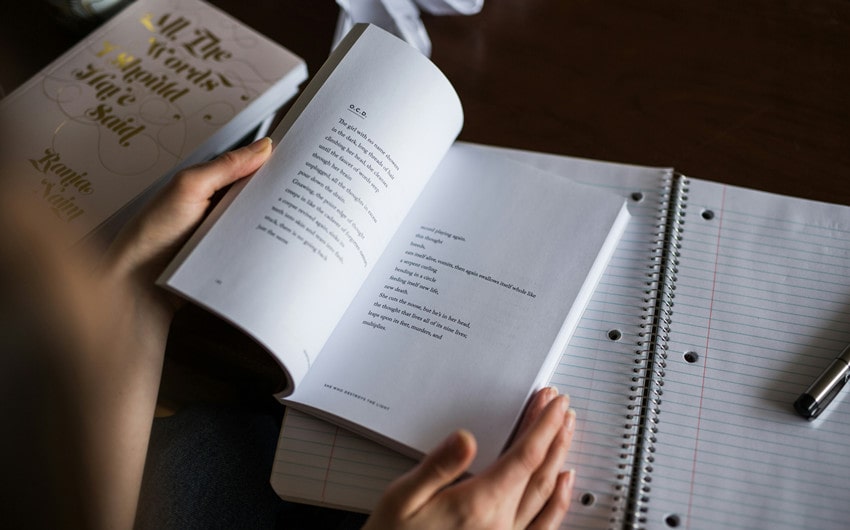
Rhyme schemes serve several important functions in poetry, enhancing both the aesthetic and structural elements of a poem. Here’s a detailed look at how rhyme schemes contribute to the overall impact of poetic works:
Creating Rhythm and Musicality
One of the primary functions of rhyme schemes is to create a sense of rhythm and musicality in a poem. The repetition of similar sounds at regular intervals gives the poem a beat or cadence, which can make the poem more engaging and memorable.
This musical quality can evoke emotions and moods, helping to convey the poem’s message more effectively. For example, the steady rhythm in Robert Frost’s “Stopping by Woods on a Snowy Evening” helps create a serene and contemplative atmosphere.
Enhancing Memorability
Rhyme schemes also enhance the memorability of a poem. The predictable patterns of rhymes make it easier for readers to remember the lines. This is particularly important in oral traditions, where poetry was often recited or sung from memory. The mnemonic quality of rhymes ensures that the poem can be easily recalled and passed down through generations.
Unifying and Structuring the Poem
Rhyme schemes provide a structural framework that unifies a poem. By linking lines together through rhyme, the poet can create a cohesive and organized piece of writing. This structure helps to guide the reader through the poem, making it easier to follow the progression of ideas and emotions.
For instance, the ABAB rhyme scheme in a Shakespearean sonnet helps to neatly divide the poem into quatrains and a final couplet, each serving a specific function in the overall argument or theme.
Emphasizing Key Words and Ideas
The use of rhyme can draw attention to specific words or ideas within a poem. By placing important words at the end of rhyming lines, poets can highlight them and reinforce their significance. This technique can underscore the main themes or emotions of the poem, ensuring that they resonate with the reader. In Edgar Allan Poe’s “The Raven,” the repeated rhyme of “nevermore” emphasizes the theme of loss and despair.
Creating Connections and Contrasts
Rhyme schemes can create connections between different parts of a poem, linking ideas or images that might otherwise seem unrelated. This can add depth and complexity to the poem, inviting readers to explore the relationships between the rhymed elements. Conversely, rhymes can also highlight contrasts, setting up comparisons that enhance the meaning of the poem. The alternating rhymes in an ABAB scheme, for example, can juxtapose different images or ideas, enriching the poem’s texture.
Enhancing the Poetic Form
Certain poetic forms are defined by their specific rhyme schemes, and adhering to these patterns can enhance the formal qualities of a poem. Forms like the sonnet, villanelle, and limerick have distinct rhyme schemes that contribute to their unique character and appeal.
Mastering these forms can challenge poets to be more creative and disciplined, resulting in highly structured and impactful poetry. The strict ABA ABA ABA ABA ABA ABAA pattern of a villanelle, for example, creates a hypnotic repetition that can be used to explore themes of obsession or cyclicality.
Engaging the Reader
Rhyme schemes engage readers by creating expectations and then fulfilling or subverting them. The anticipation of the next rhyme keeps readers invested in the poem, while unexpected changes in the rhyme scheme can surprise and delight them. This dynamic interaction between the poem and the reader enhances the overall reading experience, making the poem more enjoyable and thought-provoking.


